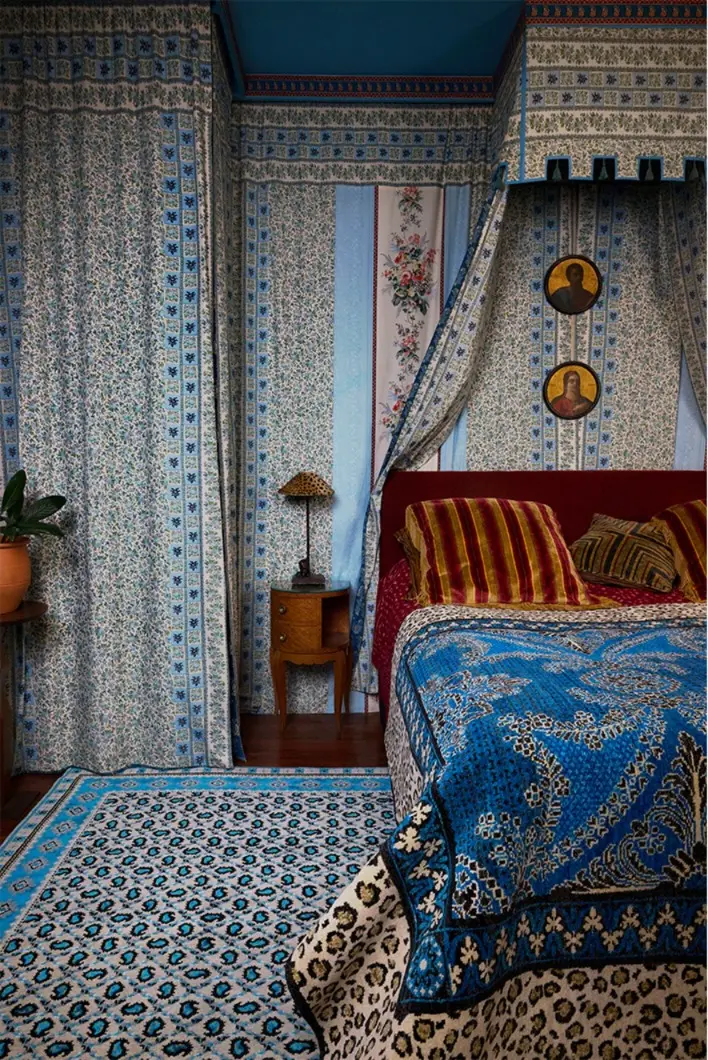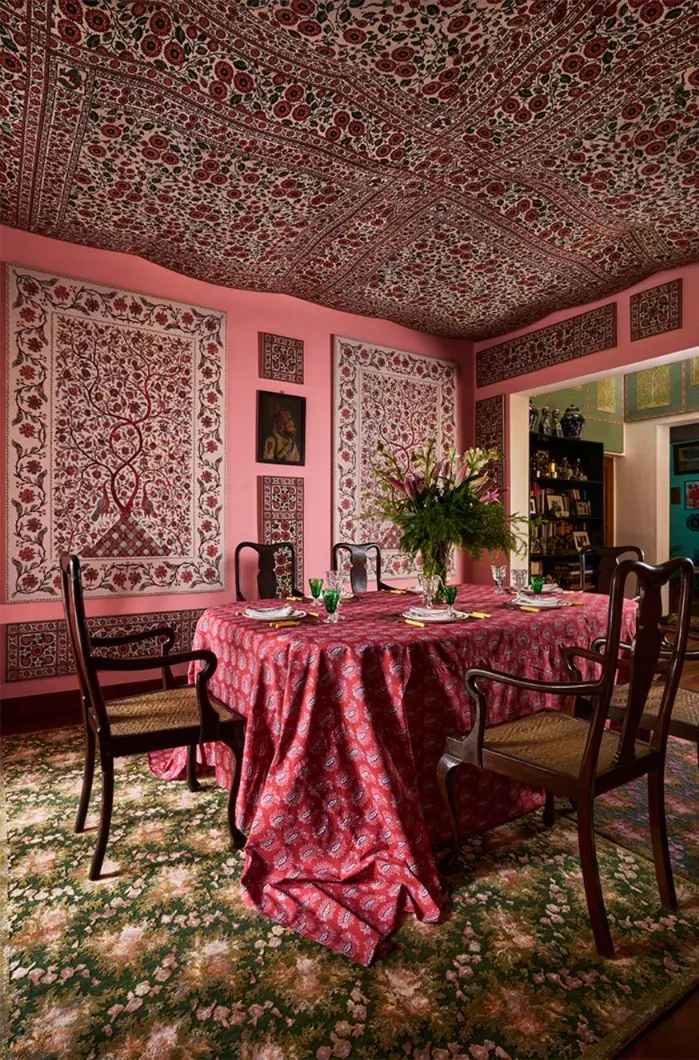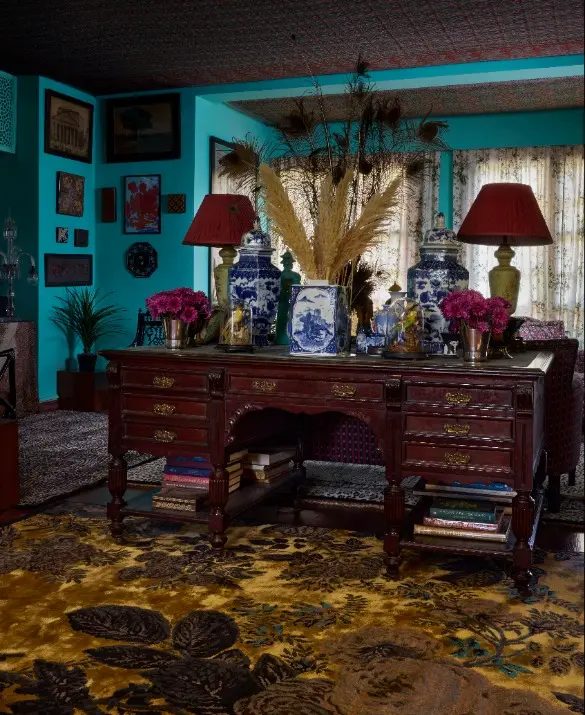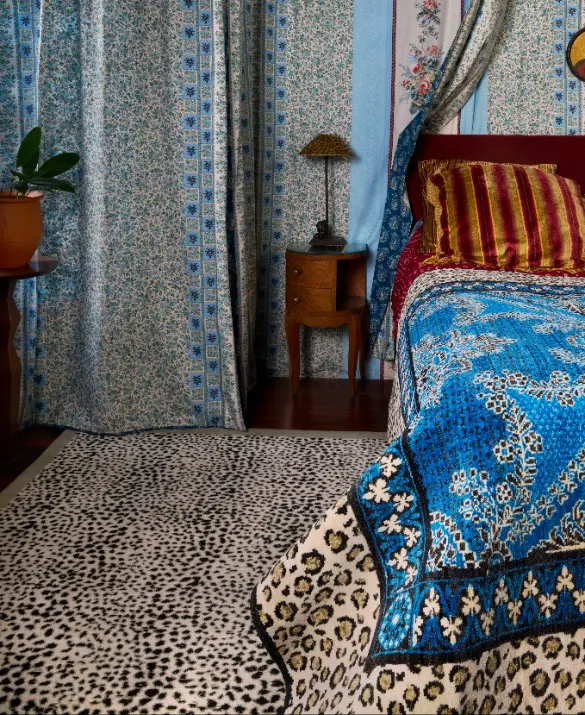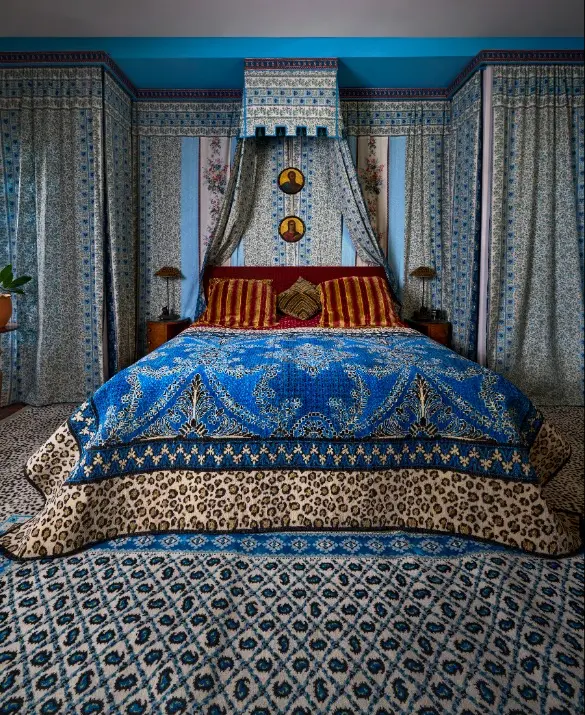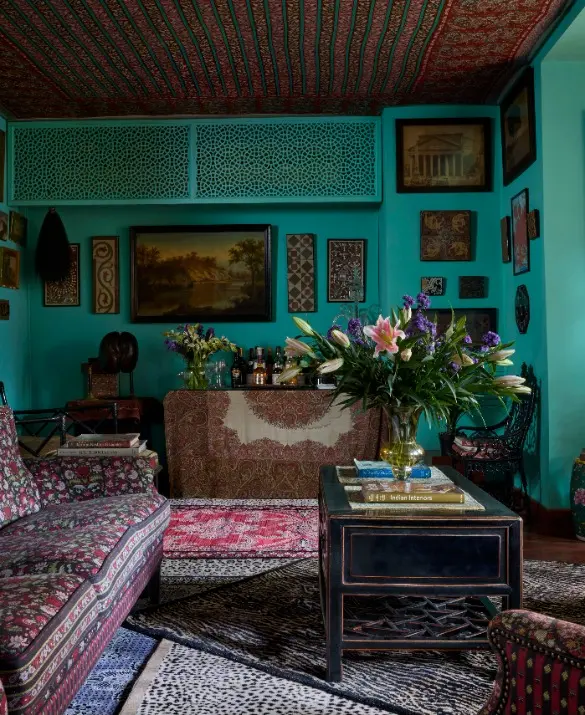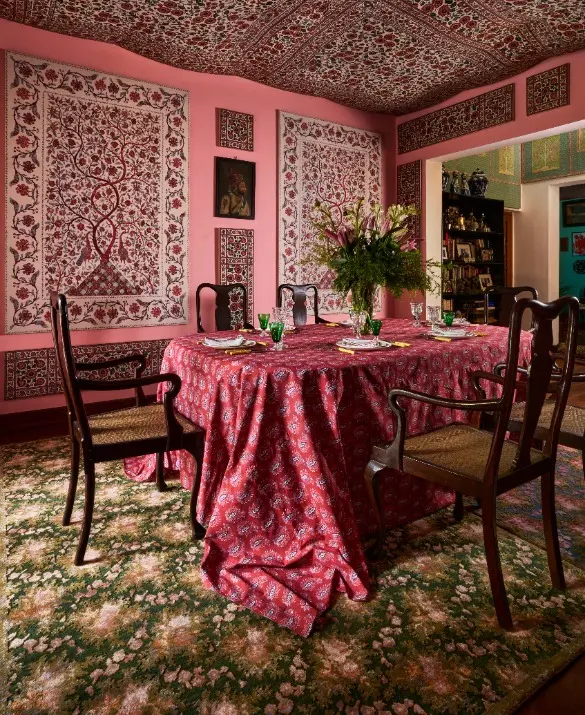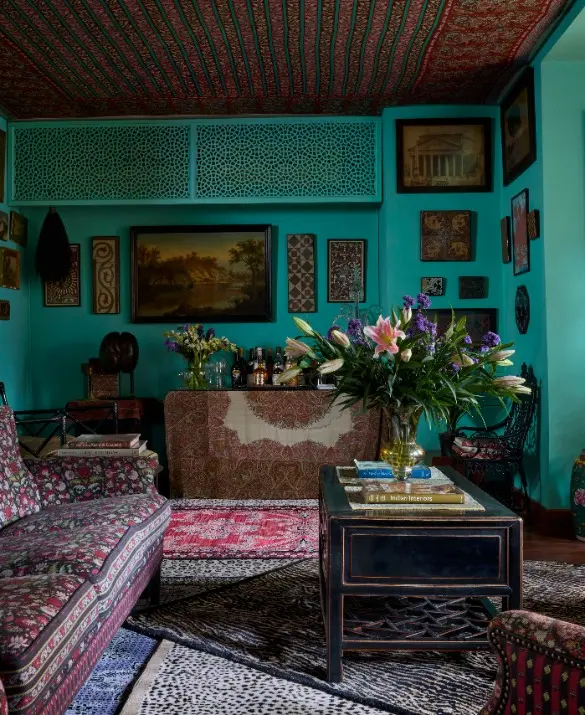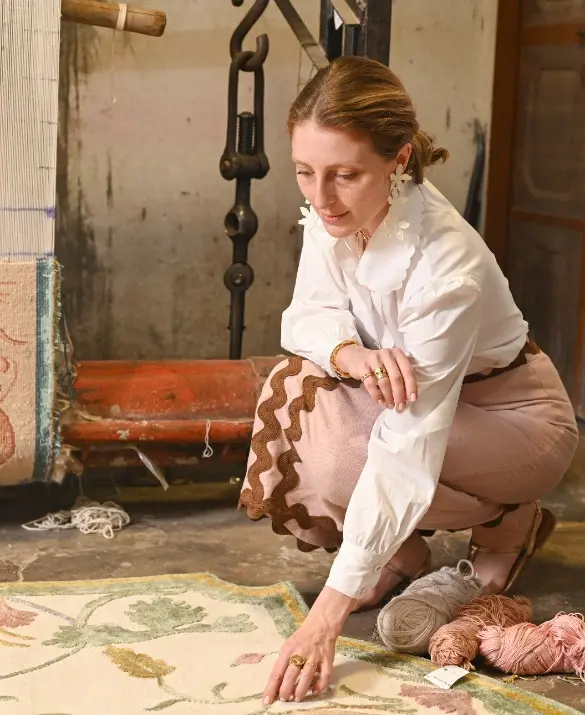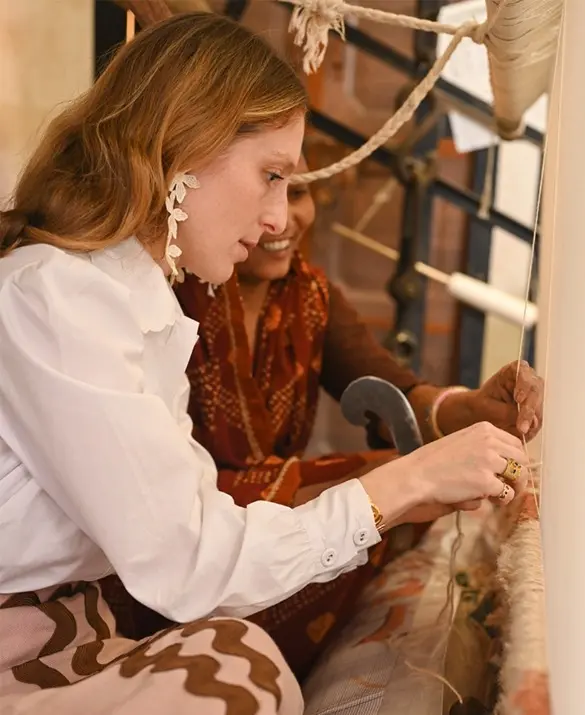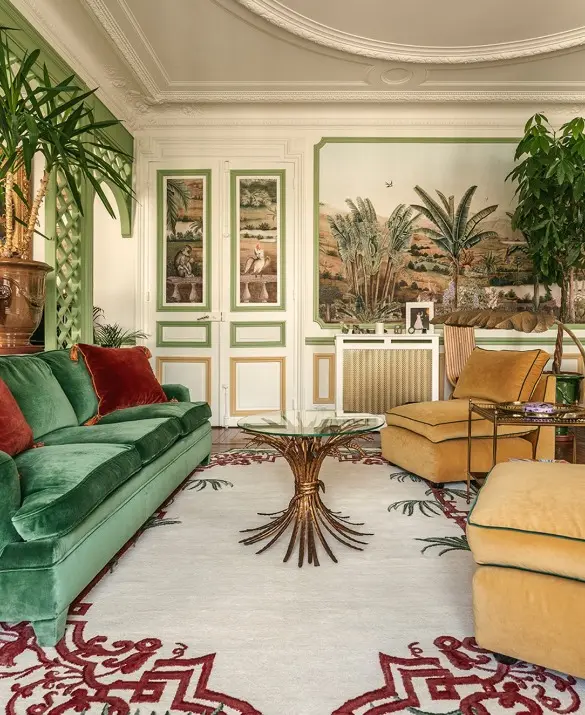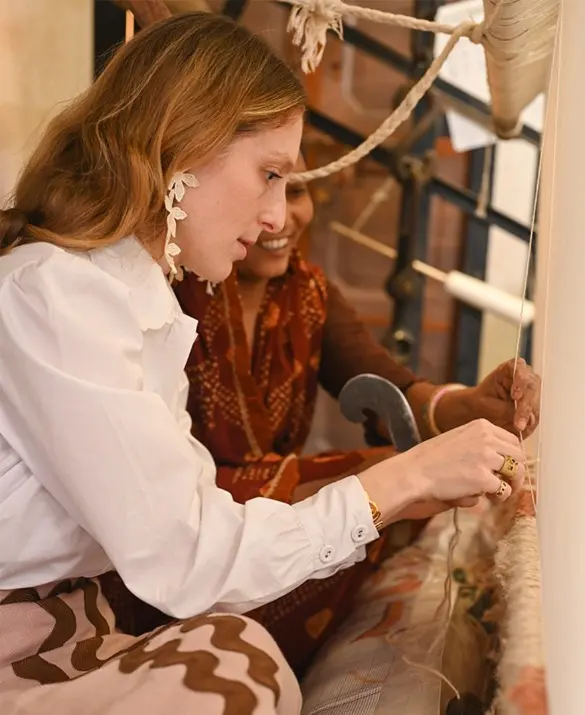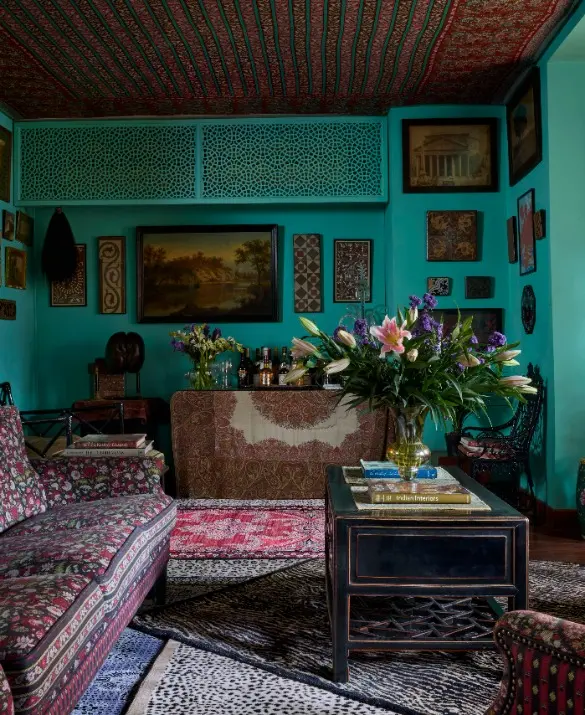Jaipur Rugs
INTRODUCES
Kashmir
Collection: The Gilded Age
Category: Accessories
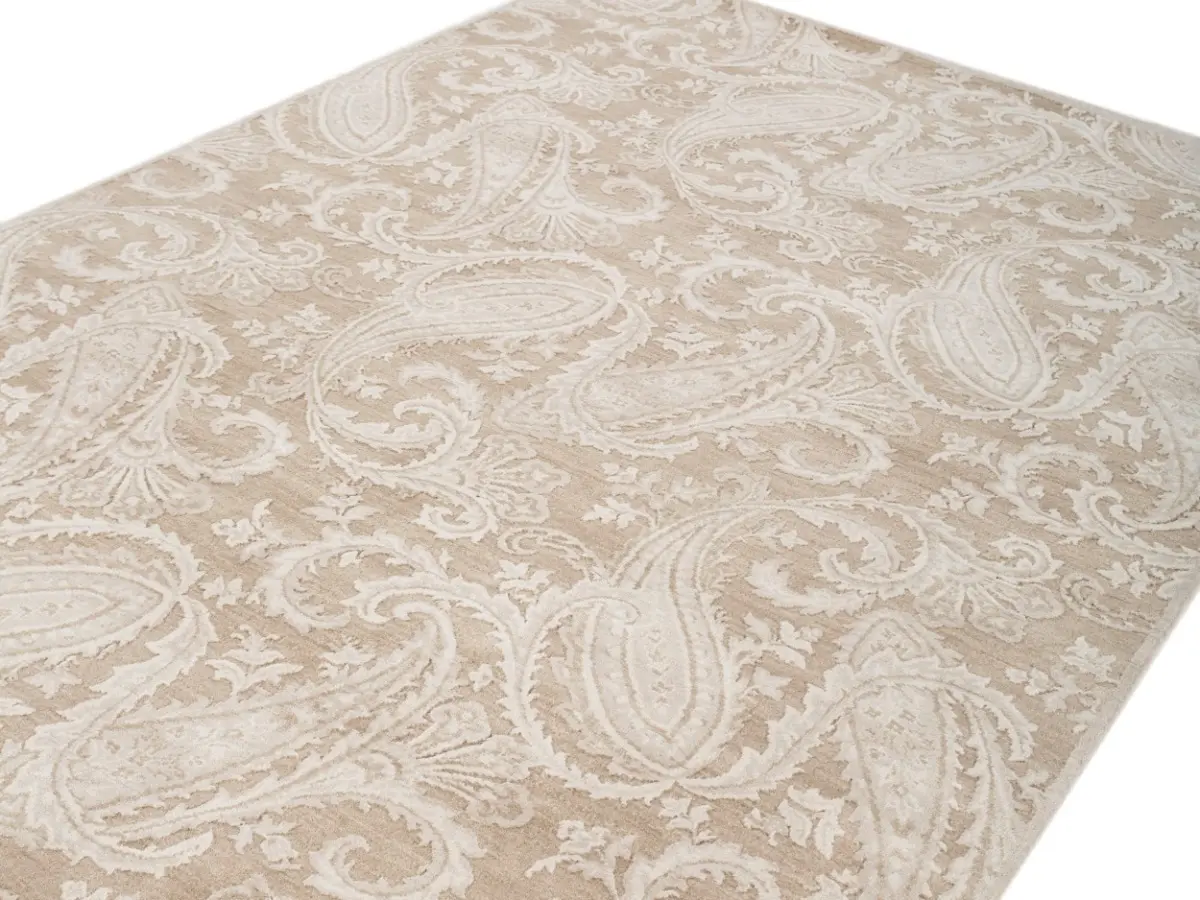
JAIPUR RUGS - Kashmir
The Gilded Age Collection honors Madeleine Castaing and Peter D’Ascoli’s global trek, merging 19th-century charm with modern design. Hand-knotted rugs show chintz florals, wild motifs & neoclassical details!!

Product description
The Indian artistry and the highly regarded Kashmiri craftsmanship is not an unknown fact to the world. Popularised in the 18th Century in France, the paisley patterns have been an important part of the European decorating tradition ever since the frenzy for Kashmiri shawls experienced towards the end of the century. In the 19th and early 20th century these motifs were reinterpreted, and the Kashmir collection has been woven to life in the 21st century with the same vision, colours which range from brilliant blue and red to more subtle white and cream. The beauty of the all-over paisley pattern hand-woven delicately is a detail appreciated by the keen eyes.

Product name
Kashmir
Designer
PETER D’ASCOLI
Materials
Wool
Dimensions
6x9 FT / 180x270 CM / 72x108 INCHES / 1.82x2.74 METERS
Production process
Hand-Knotted
Hand-knotting found its way into Indian heritage from Persia, giving it its name, Persian Hand-knotting. It’s uniqueness in art is through its style of printing; knot by knot and line by line, paying attention to each intricate detail. It’s a process taking a minimum of 2 months, ranging up to almost a year depending on the quality and size of carpet being woven.
Differentiating each knot was originally done by memory, where weavers would sing out the colors of the line of knots called Boli weaving. This later evolved to the use of design maps, which helped accommodate a rapidly changing design palate. Artisans place the design map at the base of the loom and use each pixel in a chart as a reference to a knot. Artisans with Jaipur Rugs are also a part of a unique sustainable initiative called Manchaha, where they get to design their own rugs at the loom.
Hand-knotting found its way into Indian heritage from Persia, giving it its name, Persian Hand-knotting. It’s uniqueness in art is through its style of printing; knot by knot and line by line, paying attention to each intricate detail. It’s a process taking a minimum of 2 months, ranging up to almost a year depending on the quality and size of carpet being woven.
Differentiating each knot was originally done by memory, where weavers would sing out the colors of the line of knots called Boli weaving. This later evolved to the use of design maps, which helped accommodate a rapidly changing design palate. Artisans place the design map at the base of the loom and use each pixel in a chart as a reference to a knot. Artisans with Jaipur Rugs are also a part of a unique sustainable initiative called Manchaha, where they get to design their own rugs at the loom.
Year
2025






